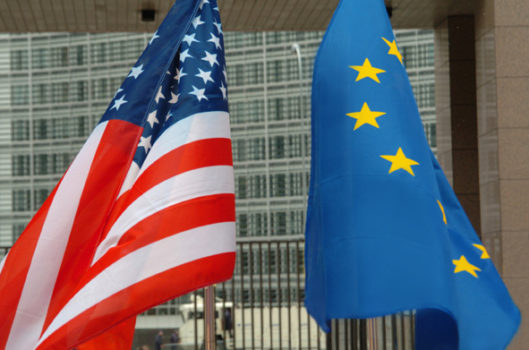How Can EU Ad Tech Companies Crack the US Market?
by Lindsay Rowntree on 29th Feb 2016 in News

Expansion into the US is an aspiration for many budding ad tech companies that have put down roots in EU markets. But, with cross-border barriers to entry and stiff competition in the home market, how can these EU ad techs make a success of it? ExchangeWire spoke to Mike Kerans (pictured below), managing partner, C.R.O. Partners, New York-based specialists in growing revenue for digital media and technology companies. Kerans gave the straight-talking lowdown on the common mistakes made and the three key success factors EU companies must consider when expanding to the US.
Hire Bottom-Up
This may be the most counterintuitive point. EU companies often assume hiring a US country manager is the correct first move. This is a mistake. First, the US hiring environment in digital is extremely competitive. An unknown international digital firm, with no US traction, will have difficulty attracting the best talent. Second, you will have a better sense of what the right profile and fit looks like in six to twelve months' time. Third, this approach can be expensive, creating an unnecessarily high burn rate.
We recommend beginning bottom-up. Start hiring salespeople who are in the trenches, working alongside you, to secure and manage early clients. If the CEO has not moved to the US, monthly trips can be planned and meetings scheduled for the executive team on a rotating basis. Our clients fly in Monday, have meetings Tuesday through Thursday and are on a Thursday evening flight home. This system works well.
This phased approach enables you to create validation and establish momentum. With traction, you have a much better chance of attracting A-level talent. This is a more effective and efficient approach.
We are working with a prominent French startup that has a bold new solution in the video space. This is a perfect case of a concept that needed quick validation from trusted US media brands. We engaged top publishers as clients, including the TV network NBC. This immediately changed the way people see this company and the potential for its success.
Simplify Your Approach
This is the biggest difference between the US and EU, and the most important one. The US is more competitive. Generally, you do not have the time with clients in the US that you can enjoy in the EU. There are currently more than 2,500 digital companies in the LUMAScape. Prospects often take several new pitch meetings per day, and receive another five to ten pitch requests per day. Think of your pitch process as if you were jumping onto a moving train.
The initial outreach must be succinct and designed to secure a twenty-minute meeting. The pitch should be simple enough to be a conversation, which helps create a connection. This also forces you to simplify the message so that the prospect can grasp it easily. If a deck is needed, it is six to eight slides.
The product offering and trial must be fully defined so that the prospect does not have to think. If you say your solution can do “…this or that or that depending on what you want to do…” that freezes the decision. The last thing you want to hear at the end of the meeting is, “Let us think about how to use it.” Why? They won't. They don't have time. You have their attention at this moment. Now is the time to agree to next steps.
In most cases, the next step is a trial. Every aspect of your trial must be defined precisely: product, integration, success metrics, reporting, timing, cost, and exact next step. Pricing should be a single approach – not an array of options. The legal agreement should be short, standardised and created by a US attorney. Again, the idea is to minimise the number of decisions the prospect has to make. They are simply saying, “yes”.
EU companies have a tendency to bundle together a number of products or features in the initial product offering. This can slow down quick adoption. Simplifying the product offering to one clear product is recommended. Once engaged, you are well positioned to up-sell and expand the client relationship.
Position Carefully
This may be the hardest for EU companies. They have been successful in their EU markets, but it does not work just to transfer that same approach to the US. The issues, customers, and competition are different. EU companies that rush into the US with their EU messaging can fail quickly. The stakes are high because you do not get a second chance to make that first impression.
It is critical to understand the nuances of your category in the US. Analyse the competition. Talk to prospects. Understand their pain points. Position your company to alleviate that pain. Be precise with no jargon. Prospects hear similar language in the many pitches they receive. It is critical to differentiate your business and its USPs in plain English.
The opening is there, but it takes work to find yours and address it clearly. If positioning is done well, an EU company has the same chance to succeed as its US competitors do. The point is to be market-driven, not product-driven.
When these three key success factors are executed and the company gains US traction, there is an opportunity to attract US investment. Working with Grapeshot, a UK-based adtech firm, C.R.O. Partners created enough success in nine months for the company to raise USD$3.3m (£2.3m) for US expansion.
DisplayEMEAM&AMartechNorth AmericaSkillsTechnologyUK








Follow ExchangeWire